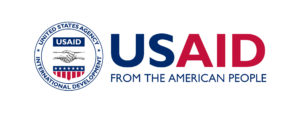 The next time you see a glowing article about or an interview with a woman who has started her own initiative or nonprofit in the town or neighborhood where she lives, or who is running for office, or who is leading a fight against some polluter or oppressor in her area, no matter what country it’s happening in, consider what this woman is probably dealing with that isn’t talked about in the article: vicious, constant personal attacks and criticisms.
The next time you see a glowing article about or an interview with a woman who has started her own initiative or nonprofit in the town or neighborhood where she lives, or who is running for office, or who is leading a fight against some polluter or oppressor in her area, no matter what country it’s happening in, consider what this woman is probably dealing with that isn’t talked about in the article: vicious, constant personal attacks and criticisms.
In a blog I wrote a year ago, called Barriers to women’s leadership we don’t talk about, I wrote about women in other countries who pay a hefty price in their attempts to be ambitious at work and exert any kind of leadership, particularly via gossip but also per constant insults and criticisms from other women. And I noted that those barriers happen right here in the USA to women who try to lead in some way, small or large.
Women are continually, regularly discouraged from thinking of themselves as powerful or ambitious or worthy of leading in any efforts, no matter how large or small. When women try to lead – whether on a project or even just regarding a topic during a discussion- the reaction can be discouraging or even ugly. The reactions come from colleagues, from the community, even from those they try to serve. Even from family members.
Women who try to lead are often subjected to insults and attacks designed specifically to prey on personal fears and insecurities. I’ve certainly it experienced myself. Newly-elected congresswoman Alexandria Ocasio-Cortez is experiencing it to a degree that would make most people wither – any Internet search of her name will illustrate it.
Right here in the small town in Oregon where I live, a few years ago, a young woman decided to create a participatory project that she hoped would build community cohesion, something the population was struggling with. She planned carefully, encouraged and welcomed participation, shared decision-making and made it completely transparent, and personally reached out and guided participants in the project, all while making sure her vision was always at the forefront – it was about that vision, not about her. The project flourished: more and more people participated and her vision was being realized: more and more people became aware of local government meetings and action (and how to participate in such), new resources from the county public health office, road conditions, and even new restaurant openings. Rumors were quickly squashed. Neighbors were helping each other – neighbors who might never have met otherwise. Involvement in her project grew to a number that was more than 25% of the population, and it included me – I was skeptical at first, but quickly bought into her efforts. A newspaper wrote a story about her efforts. At a debate for candidates running for local office, two candidates talked about her project in their remarks and how it was so important to the community and they wanted to better leverage it.
 But some people didn’t like her success. A small minority of participants provided constant public and private criticism of how she moderated and facilitated activities and how she reinforced the goals of the project, and rarely was the criticism constructive. People who violated the project’s policies – policies that are in writing and about which regular reminders are sent – were angry when they were gently reprimanded, even if that reprimand happened well behind the scenes, discreetly. They were furious when their actions, in violation of the written policies, lead them to being blocked from further participation. The founder received personal insults via direct message and text, like the one posted next to this paragraph (it’s one of the milder ones, actually). At least one person created a fake account on Facebook and posted outrageous messages, trying to make people think it was the group founder. At least three rival projects were launched by disgruntled former participants – all failed after just a few weeks or months. But that tiny, vocal, persistent minority and their constant insults and attacks finally did her in: after four years, she resigned her role as project owner and manager, not because she thought the project needed fresh leadership, not because there were people who had demonstrated that they were ready to take over, but because, emotionally, she just couldn’t take the belittling and abusive comments anymore. It will now be up to the remaining volunteers to keep the project going. And maybe the project will continue. But what I’m worried about is that she’s probably going to continue to be targeted for comments by people in any endeavor she undertakes in this small town because she DARED to lead.
But some people didn’t like her success. A small minority of participants provided constant public and private criticism of how she moderated and facilitated activities and how she reinforced the goals of the project, and rarely was the criticism constructive. People who violated the project’s policies – policies that are in writing and about which regular reminders are sent – were angry when they were gently reprimanded, even if that reprimand happened well behind the scenes, discreetly. They were furious when their actions, in violation of the written policies, lead them to being blocked from further participation. The founder received personal insults via direct message and text, like the one posted next to this paragraph (it’s one of the milder ones, actually). At least one person created a fake account on Facebook and posted outrageous messages, trying to make people think it was the group founder. At least three rival projects were launched by disgruntled former participants – all failed after just a few weeks or months. But that tiny, vocal, persistent minority and their constant insults and attacks finally did her in: after four years, she resigned her role as project owner and manager, not because she thought the project needed fresh leadership, not because there were people who had demonstrated that they were ready to take over, but because, emotionally, she just couldn’t take the belittling and abusive comments anymore. It will now be up to the remaining volunteers to keep the project going. And maybe the project will continue. But what I’m worried about is that she’s probably going to continue to be targeted for comments by people in any endeavor she undertakes in this small town because she DARED to lead.
For anyone who offers advice for women who want to be leaders that is focused on smoothing out presentation style and being more gentle or diplomatic, I say, quite frankly: bollocks. Being overly concerned by one’s image with everyone or even the most vocal group of critics, however large or small, diminishes that person’s mental and emotional resources needed for leadership. People who are distracted about how everyone else perceives them – or even a vocal minority – are less clear about their goals and less capable of reaching them. And make no mistake: women are targeted by this kind of criticism far, far more than men.
I hate most of the articles I have ever read on women’s leadership. One I did not hate is Women Rising: The Unseen Barriers by Herminia Ibarra, Robin J. Ely and Deborah M. Kolb. A version of the article was published in the September 2013 issue of Harvard Business Review. And I loved this quote from the article in particular:
Integrating leadership into one’s core identity is particularly challenging for women, who must establish credibility in a culture that is deeply conflicted about whether, when, and how they should exercise authority.
The reality is that effective leaders must have the confidence, and maybe even arrogance, to take initiative and action despite insults and criticisms. They have to know when a criticism is something to be considered, something to be used for improvement, and when it’s meant solely to be spiteful, to undermine and derail efforts and to personally attack someone and undermine their confidence. Effective leaders must be firmly anchored in their purpose. They need to always keep their cause, mission, project, objective, key message, whatever it is, as the first and foremost priority in all they do, and remember that everything they do needs to be true to that cause or message – a cause or message bigger than themselves. Absolutely, leaders need to listen to and consider comments and criticism about their performance – but they also need to know when to ignore insults. They need to know when they are hearing constructive criticism and when something is being said or done solely to tear someone down. And that can be difficult for even the best leaders.
When men are firmly anchored in their purpose, they are admired as confident. When women do this – well, we all know what is said about women who do this. But maybe instead of telling women to alter their behaviors if they want to be leaders, we need to start calling out the double standards in how we describe and respond to women leaders.
Updated April 15, 2021: A comic strip demonstrates the challenges women face online. It’s developed by Kenya ICT Action Network (KICTANet). In a story of three differently aged, differently shaped and differently employed women, we see what violence can look like online, how the seemingly harmless can actually contribute to it, and what we can all do to prevent it and to create a safer space for women online.
Also see:




 I recently joined the board of a brand new nonprofit. I am helping with the content of its first ever web site. I decided to look at the web sites of some other similar organizations to get some ideas.
I recently joined the board of a brand new nonprofit. I am helping with the content of its first ever web site. I decided to look at the web sites of some other similar organizations to get some ideas. I’ve updated
I’ve updated  In honor of Anthony Bourdain, whose loss I still mourn, I read Kitchen Confidential: Adventures in the Culinary Underbelly for the first time. It’s a fantastic read – I highly recommend it. There’s a short section where he lists all of the wrong reasons to start a restaurant and a list of signs that a restaurant is in trouble, followed by a long narrative of his personal experiences at such failing restaurants. It got me thinking about what I’ve always considered the obvious signs of a nonprofit that’s in trouble and the wrong reasons to start a nonprofit, based on my what I’ve seen and experienced.
In honor of Anthony Bourdain, whose loss I still mourn, I read Kitchen Confidential: Adventures in the Culinary Underbelly for the first time. It’s a fantastic read – I highly recommend it. There’s a short section where he lists all of the wrong reasons to start a restaurant and a list of signs that a restaurant is in trouble, followed by a long narrative of his personal experiences at such failing restaurants. It got me thinking about what I’ve always considered the obvious signs of a nonprofit that’s in trouble and the wrong reasons to start a nonprofit, based on my what I’ve seen and experienced. The next time you see a glowing article about or an interview with a woman who has started her own initiative or nonprofit in the town or neighborhood where she lives, or who is running for office, or who is leading a fight against some polluter or oppressor in her area, no matter what country it’s happening in, consider what this woman is probably dealing with that isn’t talked about in the article: vicious, constant personal attacks and criticisms.
The next time you see a glowing article about or an interview with a woman who has started her own initiative or nonprofit in the town or neighborhood where she lives, or who is running for office, or who is leading a fight against some polluter or oppressor in her area, no matter what country it’s happening in, consider what this woman is probably dealing with that isn’t talked about in the article: vicious, constant personal attacks and criticisms. But some people didn’t like her success. A small minority of participants provided constant public and private criticism of how she moderated and facilitated activities and how she reinforced the goals of the project, and rarely was the criticism constructive. People who violated the project’s policies – policies that are in writing and about which regular reminders are sent – were angry when they were gently reprimanded, even if that reprimand happened well behind the scenes, discreetly. They were furious when their actions, in violation of the written policies, lead them to being blocked from further participation. The founder received personal insults via direct message and text, like the one posted next to this paragraph (it’s one of the milder ones, actually). At least one person created a fake account on Facebook and posted outrageous messages, trying to make people think it was the group founder. At least three rival projects were launched by disgruntled former participants – all failed after just a few weeks or months. But that tiny, vocal, persistent minority and their constant insults and attacks finally did her in: after four years, she resigned her role as project owner and manager, not because she thought the project needed fresh leadership, not because there were people who had demonstrated that they were ready to take over, but because, emotionally, she just couldn’t take the belittling and abusive comments anymore. It will now be up to the remaining volunteers to keep the project going. And maybe the project will continue. But what I’m worried about is that she’s probably going to continue to be targeted for comments by people in any endeavor she undertakes in this small town because she DARED to lead.
But some people didn’t like her success. A small minority of participants provided constant public and private criticism of how she moderated and facilitated activities and how she reinforced the goals of the project, and rarely was the criticism constructive. People who violated the project’s policies – policies that are in writing and about which regular reminders are sent – were angry when they were gently reprimanded, even if that reprimand happened well behind the scenes, discreetly. They were furious when their actions, in violation of the written policies, lead them to being blocked from further participation. The founder received personal insults via direct message and text, like the one posted next to this paragraph (it’s one of the milder ones, actually). At least one person created a fake account on Facebook and posted outrageous messages, trying to make people think it was the group founder. At least three rival projects were launched by disgruntled former participants – all failed after just a few weeks or months. But that tiny, vocal, persistent minority and their constant insults and attacks finally did her in: after four years, she resigned her role as project owner and manager, not because she thought the project needed fresh leadership, not because there were people who had demonstrated that they were ready to take over, but because, emotionally, she just couldn’t take the belittling and abusive comments anymore. It will now be up to the remaining volunteers to keep the project going. And maybe the project will continue. But what I’m worried about is that she’s probably going to continue to be targeted for comments by people in any endeavor she undertakes in this small town because she DARED to lead. I think the work of the
I think the work of the 